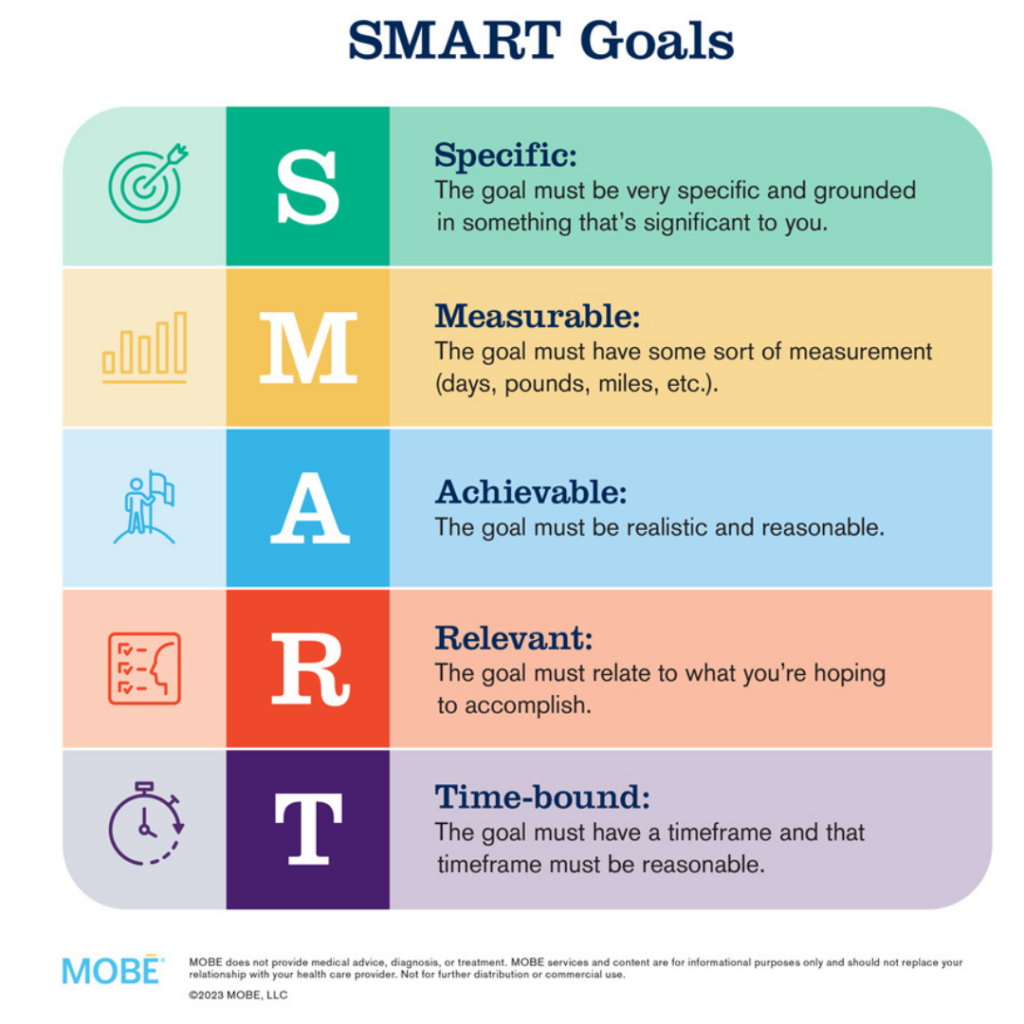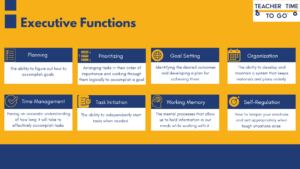Executive Functioning is best understood as the skills we use every day to learn, work and manage daily life. You can think of the term as the skills required to execute tasks.
This is the third post of an 8-part series highlighting Executive Functioning Skills. You will find definitions, parent recommendations and strategies that can be implemented for immediate support at home for families or in the classroom for teachers. My hope is that by helping you to understand what Executive Functioning is, you’ll be able to best support your child!
This post is all about Goal Setting.
Goal Setting can be defined as identifying the desired outcomes and developing a plan for achieving them.
SMART Goal Setting
I like to use an acronym SMART to stay consistent. “S” is specific, “M” is measurable, “A” is attainable, “R” is relevant and “T” is time bound. SMART goals increase the chances of success by clarifying ideas, focusing efforts, and managing time wisely.

Let’s go over an example to help this make sense! Setting a goal to run a 10 minute mile is an example of a SMART goal, and here is why:
A goal must be specific. This means it should be clearly defined and understandable.
Specific goals are fine-tuned and exact. The goal of running a 10 minute mile is specific.
A goal needs to be measurable. There must be a way to track progress and determine if the goal is achieved. An easy way to do this is to set mini-goals that can be accomplished while working towards the larger goal. If the goal is to run a 10 minute mile, it would be helpful to work towards that time gradually, or in thirty-second intervals.
A goal should be attainable. A goal that is realistic and possible to achieve is an attainable goal. If a person setting a goal to run a 10 minute mile can not run a mile, the goal is not attainable.
Goals should be relevant. A goal is relevant if it is meaningful, important, and worthwhile. Relevant goals are more likely to be achieved. An athlete may want to run a 10 minute mile to make the track team or get a better grade in gym class. Either way, the goal has a deeper meaning.
Goals must be timely. Establishing a deadline is a critical step in the goal-setting process. It is critical that the goal has time constraints. There is no urgency created by an open-ended goal. For example, setting a goal to be able to run a ten-minute mile within six months is timely.
This is the goal setting process that you should go through each time you have a goal in mind.

Resource Recommendation:
I love using the below resource! It makes goal setting interactive and is filled with prompts and questions that inspire your child to discuss their dreams and goals. All you need is some dice. You can use this really anytime and anywhere and it can be adjusted based on your child’s age. There are so many goal setting prompts available online, this is just one of my favorite!

Final Thoughts
The biggest takeaway for goal setting is to go from DREAMING to ACHIEVING. By following the SMART Goal Setting Framework, you can do just that!
Here at TT2G, we are working with about 500 families in the local community and approximately 75% of those families request some sort of Executive Functioning Support. So, this set of skills is a highly sought-after service. If you feel your student could use some extra support in this area, reach out to us! We have a variety of options to best fit your needs, from group seminars to individualized assessment plans.
Next up in the series we will be discussing the skill of Organization!
As a reminder, we will go into detail about each of these with a specific (user friendly definition) and support strategies! This chart below will guide the series!

If you’d like to review the other posts in the series, you’ll find them here: Overview, Planning, and Prioritizing.
Have a Goal Setting strategy that works for you? We’d LOVE to hear from you!
Live.Laugh.Learn,
Jenn

